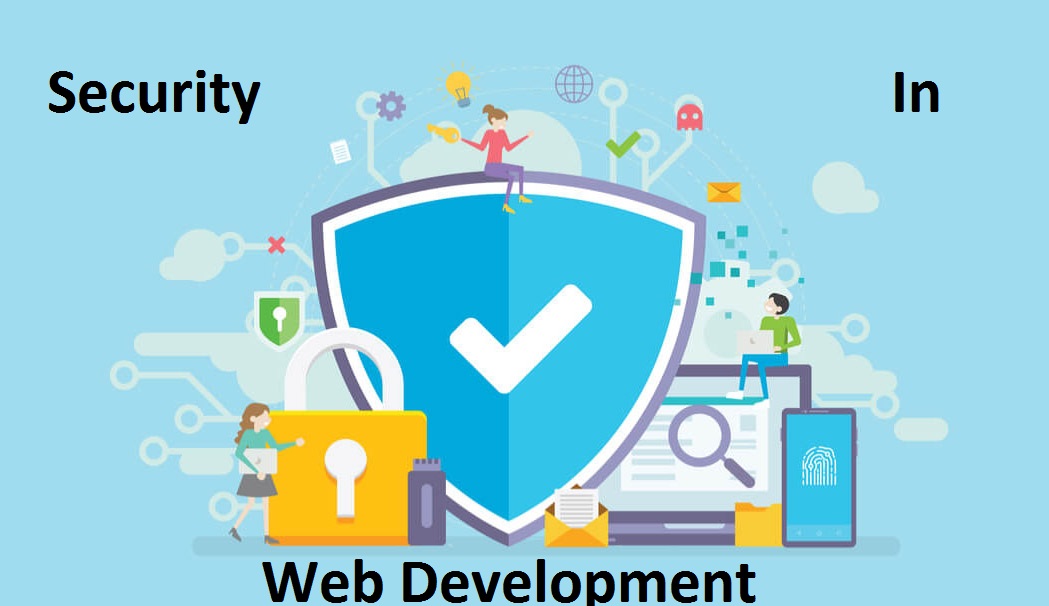Security in Web Development
Security in Web Development: In the digital age, security is paramount, especially when it comes to web development. With the rise of cyber threats and attacks, ensuring the security of your website is crucial to protecting your data and maintaining the trust of your users. In this article, we’ll explore the importance of security in web development and provide tips on how to protect your site from cyber threats.

Why Security is Important in Web Development
Security in Web Development plays a vital role in web development for several reasons. Firstly, a secure website protects sensitive information such as user data, payment details, and confidential business information. Secondly, it helps maintain the integrity and availability of your website, ensuring that it remains accessible to users without any disruptions. Lastly, a secure website helps build trust with your users, as they can feel confident that their information is safe when interacting with your site.
Common Cyber Threats to Websites
Before diving into how to protect your site, let’s first understand some common cyber threats that websites face:
Malware:
Malware is malicious software designed to disrupt, damage, or gain unauthorized access to a computer system. It can infect your website through vulnerabilities in your code or by exploiting weaknesses in your server configuration.
Phishing:
Phishing is a fraudulent attempt to obtain sensitive information by disguising as a trustworthy entity. Attackers often use phishing emails or fake websites to trick users into providing their personal or financial information.
SQL Injection:
SQL injection is a type of attack that allows attackers to manipulate a website’s database by injecting malicious SQL code into input fields. This can lead to data theft, data loss, or unauthorized access to sensitive information.
Cross-Site Scripting (XSS):
XSS is a vulnerability that allows attackers to inject malicious scripts into web pages viewed by other users. This can be used to steal sensitive information or perform unauthorized actions on behalf of the user.
DDoS Attacks:
Distributed Denial of Service (DDoS) attacks involve overwhelming a website with traffic to make it unavailable to legitimate users. This can result in downtime, loss of revenue, and damage to your reputation.
Best Practices for Securing Your Website
Now that we’ve covered some common threats, let’s discuss best practices for securing your website:
Use HTTPS:
Ensure that your website uses HTTPS to encrypt data transmitted between the user’s browser and your server. This helps protect sensitive information from being intercepted by attackers.
Keep Software Updated:
Regularly update your website’s software, including content management systems (CMS), plugins, and themes, to patch known vulnerabilities and protect against attacks.
Implement Strong Passwords:
Use strong, unique passwords for all accounts associated with your website, including FTP, CMS, and hosting accounts. Consider using a password manager to generate and store passwords securely.
Enable Two-Factor Authentication (2FA):
Implement 2FA for added security, requiring users to provide two forms of verification (such as a password and a code sent to their phone) to access their accounts.
Use Secure Hosting:
Choose a reputable hosting provider that offers robust security measures, such as regular backups, firewalls, and intrusion detection systems (IDS).
Limit File Uploads:
Restrict file uploads to only allow files with safe extensions, and scan all uploads for malware before making them accessible to users.
Regular Security Audits:
Conduct regular security audits and vulnerability assessments to identify and mitigate potential security risks.
Educate Your Team:
Train your team on security best practices, such as recognizing phishing attempts, using secure passwords, and keeping software updated.
Conclusion
In conclusion, security is a critical aspect of web development that should not be overlooked. By implementing the best practices outlined in this article, you can protect your website from cyber threats and ensure the safety of your users’ information. Remember, security is an ongoing process, so stay vigilant and keep abreast of the latest security trends and threats to keep your website safe.
